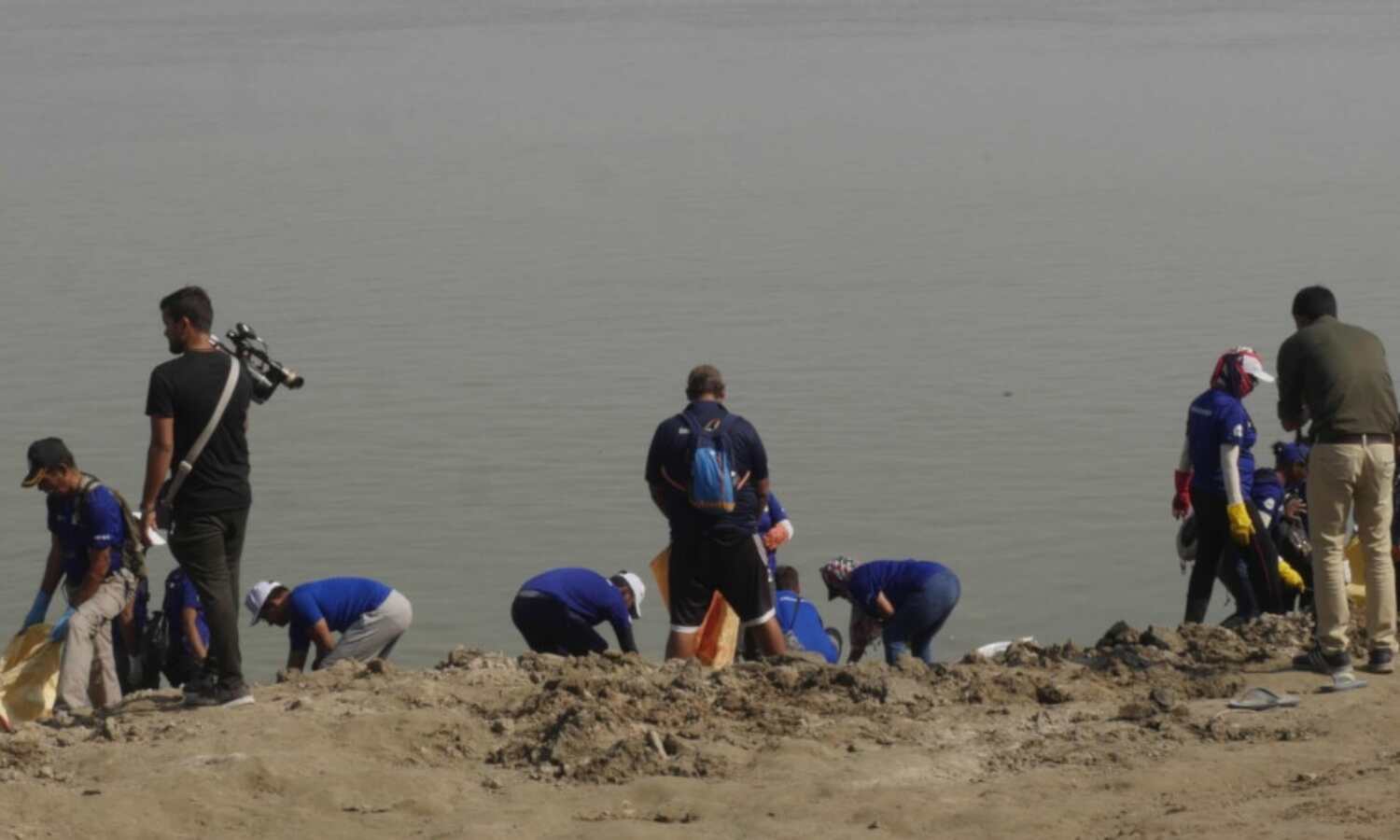As 2020 Deadline To Clean Ganga Looms, Less Than Quarter Of Budget Spent, Sewage Projects Behind Schedule, Water Quality Deteriorates: Official Data
New Delhi: With a self-declared deadline of 2020 to clean the Ganga looming, the central government has so far spent less than 25% of Rs 20,000 crore to be spent by 2019 under the Clean Ganga Mission, according to official data.
Since the launch of Namami Gange or the Clean Ganga Mission in 2015, Rs 4,800 crore has been spent on projects meant to clean the Ganga and its tributaries--Yamuna and Chambal--over about four years to November 2018, according to data presented to the Lok Sabha (lower house of Parliament) on December 14, 2018.
As on October 2018, Rs 3,700 crore, or about 77% of the expenditure of Rs 4,800 crore, had been spent on creating no more than 11% of sewage-treatment infrastructure required in cities falling on the banks of Ganga in riverine states, including Uttarakhand, Uttar Pradesh, Bihar, Jharkhand and West Bengal, according to an IndiaSpend analysis of the mission’s monthly progress reports.
Of the 96 sewage-infrastructure projects sanctioned since 2015, 23, or about 24%, were completed by October 2018, 44 (46%) were under construction and no work had started on 29 (30%).
Cleaning the Ganga--a river that flows 2,500 km from the Himalayas and waters the Gangetic plain of North India--has been on the agenda of successive governments since 1986, with about Rs 4,000 crore spent till 2014.
But the river has remained dirty.
To clean the river by 2019, the Bharatiya Janata Party (BJP)-led National Democratic Alliance government launched the biggest-ever campaign--the Namami Gange--in 2015 with a budget of Rs 20,000 crore. The programme has now been extended to 2020.
Source: Lok Sabha
Note: Rs 679.15 crore was spent on other activities (Rs 52.56 crore in 2015-16, Rs 121.12 crore in 2016-17, Rs 271.56 crore in 2017-18 and Rs 233.91 crore in 2018-19)
The river has not become any cleaner
Pollution levels at 80 monitored sites on the river have risen since 2013 according to the Central Pollution Control Board, the chief environment authority, the Wire reported on October 20, 2018.
The biochemical oxygen demand (BOD), the amount of dissolved oxygen needed by biological organisms to break down non-essential organic material in the water, was more than 3 milligram/litre (mg/l) at 36 of 80 sites and 2-3 mg/l at another 30 sites in 2017. In 2013, it was more than 3 mg/l at 31 sites and 2-3 mg/l at 24, the Wire reported.
High BOD levels are harmful to the river and its creatures. Water with BOD level of 2-3 mg/l is not fit for consumption and can cause serious diseases if consumed without treatment. If BOD crosses 3 mg/l, the water is not even fit for bathing.
Slow progress of projects
The major reason for pollution in the Ganga is the discharge of untreated and partially treated sewage from cities. The Ganga receives about 2,900 million liters of sewage discharge per day (MLD), of which only 48%, or 1,400 MLD, is treated, according to government data.
The central government, under the Clean Ganga Mission, has to create an additional 1,500 MLD (52% of discharge) sewage treatment capacity to bridge the gap but, as on October 31, 2018, only 172 MLD, or 11% of the required capacity, was completed.
(Tripathi is a principal correspondent with IndiaSpend.)
We welcome feedback. Please write to respond@indiaspend.org. We reserve the right to edit responses for language and grammar.




